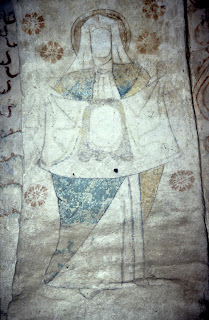Beauty, Suffering, and Mortality
How about them who experience their daily being as
burdensome and unbearable? Do they have their share in the beauty we are
talking about? I claim that they do. To quote Marsilio Ficino, amor est desiderium pulchritudinis, love
is the longing for beauty. Someone may have a life that seems devoid of both
love and beauty, and I am afraid that there are plenty of such people. But life
without longing, without hope or desire for something better, is unthinkable.
Life that has no expectations, even if it were nothing more than getting drunk
or waiting for the next meal, is inevitably going to its end. Hence beauty is
present even in the struggle for survival, amidst hunger and violence.
One should not forget that many of the great masterworks of
art are created at the time when famine and plague tortured mankind (e.g. the
frescos of Michelangelo and the cantatas of Bach). This does not mean that
outer hardships per se benefit
artistic work, but that even the hardest times can not extinguish the human
ability and urge to perceive and produce beauty. As a matter of fact, art is
one of the most significant, creative and useful ways to cope with the darkest
sides of human existence.
To see the beauty of
life does not mean that our life should have a happy ending. As far as we know,
human life is always a tragedy. We all die in the end. Beauty is something that
mortal beings are aware of. We may suppose or believe that there are immortal
beings (God, angels) who can appreciate beauty, even better than we. However,
our idea of beauty is not of a supernatural origin, even if we believe that God
is the source of all beauty. We do not know how does an immortal or all-knowing
Being apprehend beauty, but about how humans experience beauty we have ample
evidence and personal knowledge. For us, there is no other beauty than the transient and mortal one. Faith means here the necessary perspective for us to see this.



Comments
Post a Comment